When engaged in mechanical design work, there are often thread features in the parts drawings. In addition to drawing the threads in a standardized way, they also need to be marked correctly to ensure that the processed parts are what you want and there will be no errors during assembly. In addition, threaded standard parts are often used in assembly drawings, and they must also be marked correctly in the schedule so that the purchasing department can purchase them correctly. When other personnel read the mechanical drawings, they also need to understand the thread markings.
Therefore, the knowledge of thread marking is a necessary skill for those engaged in the machinery industry. This article will mainly introduce the labeling of various threads.
1 Ordinary thread
Ordinary thread is the most widely used thread in life and work. Most of the threads on threaded fasteners (bolts, studs, screws, nuts, etc.) are ordinary threads.
Ordinary threads are divided into coarse ordinary threads and fine ordinary threads. Fine-tooth ordinary threads are mostly used for precision parts and thin-walled parts (such as the ordinary threads used in hydraulic pipe joints are fine-threaded).
In the marking of threads, the pitch of fine-pitch ordinary threads must be noted, while the pitch of coarse-pitch ordinary threads is generally not marked (because fine-pitch ordinary threads of the same diameter may have multiple pitches, while the pitch of coarse-pitch threads is fixed) . Regarding the pitch of ordinary threads, there is a detailed description in the national standard (GB/T 193 ordinary thread diameter and pitch series).
The complete mark of ordinary thread consists of five parts:

For example: M10×1 ― 7H ― L ― LH
(1) Characteristic code and size code of ordinary thread
Feature code: M (represents ordinary thread).
Dimension code: Nominal diameter × pitch (the lead and pitch of multi-threaded thread must be noted, and the pitch of single-threaded coarse-thread common thread is not marked).
"M10" means: a single-thread coarse general thread with a nominal diameter of 10 mm and a pitch of 1.5 mm.
"M10×1" means: a single-thread fine-pitch ordinary thread with a nominal diameter of 10mm and a pitch of 1 mm.
(2) Tolerance zone code of ordinary thread
The tolerance zone code of ordinary thread is composed of tolerance grade (number) and basic deviation (external thread is represented by lowercase letters, and internal thread is represented by uppercase letters), such as 5g6g, 6g, 6H, 7H.
When the thread pitch tolerance zone and the top diameter tolerance zone have different codes, they need to be noted separately, such as: M10-5g6g (5g is the pitch tolerance zone code, 6g is the top diameter tolerance zone code).
When the code of the tolerance zone of the middle diameter and the top diameter is the same, only one code shall be noted, such as: M10×1-7H. When the tolerance zone code is 6g or 6H (nominal diameter ≥ 1.6mm), it is not marked (when the tolerance zone of ordinary thread is not marked, the default tolerance zone is 6g or 6H). The content of tolerance grades and basic deviations will be introduced in future articles.
(3) Screwing length of thread
The screwing length of ordinary thread has three types: long, medium and short, which are represented by code L, N and S respectively.
For example: M10-5g6g-S is a thread with short screwing length, M10-7H-L is a thread with long screwing length. When the thread is of medium length, the code N is not marked.
When special needs, the value of the screwing length can be indicated. Such as: M20×2-5g6g-40.
(4) Rotation code
Label LH when turning left, not when turning right. For example: M10-7H-L-LH is a left-hand thread, M10-7H-L is a right-hand thread.
2 pipe thread
Pipe threads are generally used in the connection of pipelines (water pipes, oil pipes, gas pipes, etc.). The markings of pipe threads are marked with a guide method, and the guide line points to the major diameter of the thread.
Marking of pipe thread: consists of thread feature code, size code and direction of rotation. The size code (nominal diameter) of pipe thread is not the size of the major diameter of the thread, but the pipe diameter (in English). The rotation direction is not marked in the mark is right-handed.
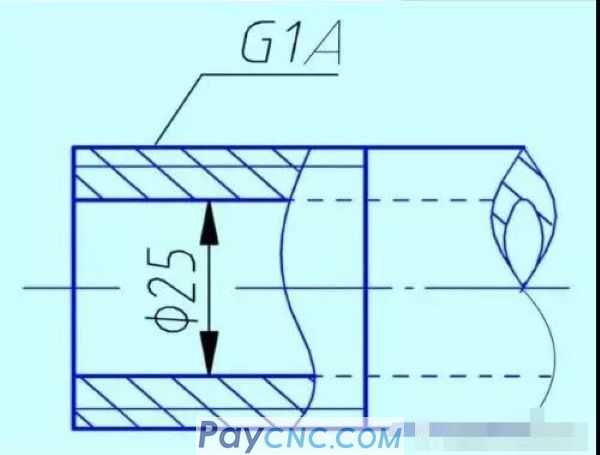
(1) Marking of 55° unsealed pipe thread
G is the thread feature code of non-sealed pipe threads. Examples of marking are as follows:
G3/4: Single-thread right-handed cylindrical internal thread with size code 3/4;
G3/4A or G3/4B: Single-thread right-handed cylindrical external thread with dimension code 3/4, A and B in the mark are the tolerance grades of the pitch diameter of the thread;
G3/4LH and G3/4A-LH: LH means left-handed thread, the thread pair formed by the two is only marked with the marking code of the external thread.
(2) Marking of 55° sealing pipe thread
The characteristic code of 55° sealed pipe thread: sealed cylindrical internal thread Rp, sealed conical internal thread Rc, conical external thread R1 matched with the cylindrical internal thread, and conical external thread R2 matched with the conical internal thread. Examples of tags are as follows:
Rp3/4LH: Single-thread left-handed cylindrical internal thread with size code 3/4;
Rc3/4: Single-line right-hand taper internal thread with size code 3/4;
Rp/R1 3/4 LH and Rc/R2 3/4: Internal thread and external thread are screwed together to form a thread pair.
3 Trapezoidal thread and serrated thread
Trapezoidal threads and sawtooth threads are often used on lead screws that transmit motion and power. When the trapezoidal thread is working, both sides of the tooth are stressed, while the serrated thread is stressed on one side when working. The markings of trapezoidal and sawtooth threads are similar to ordinary threads. Below is an example of marking for trapezoidal thread:
Tr40×7LH-7e: Trapezoidal thread (thread feature code is Tr), nominal diameter φ40, single thread, pitch 7, left-handed, pitch diameter tolerance zone code 7e; medium screwing length.
Note: Only the code of the pitch tolerance zone is marked. There are only two types of screwing lengths (codes N and L). When the screwing length is equal, N is omitted.
When the thread is a multi-thread thread, it is marked as: Tr40×14 (P7)-7e, where “14” is the lead, “7” is the pitch, double thread thread.
The thread pair of trapezoidal thread is expressed as: Tr40×7-7H/7c, the tolerance zone of internal thread is in the front, and the tolerance zone of external thread is in the back, and the two are separated by "/".
4 Marking example of thread
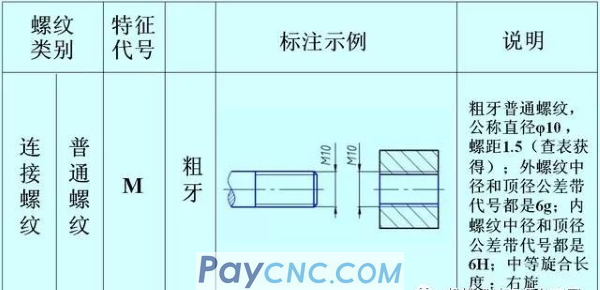 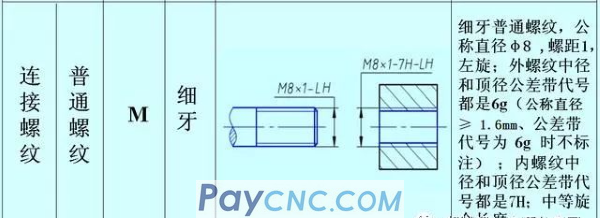 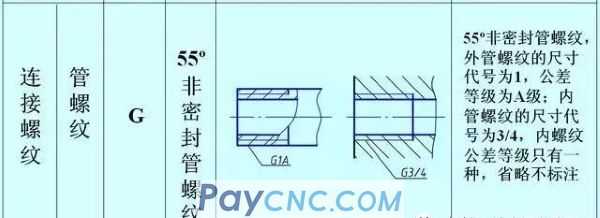 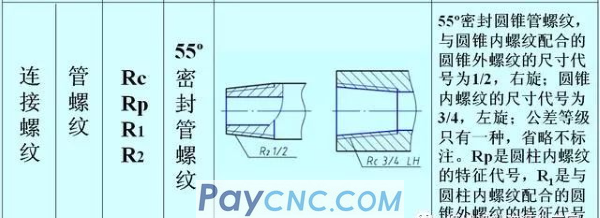 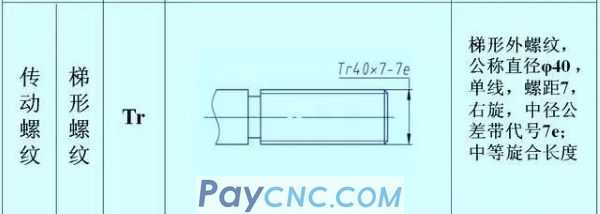 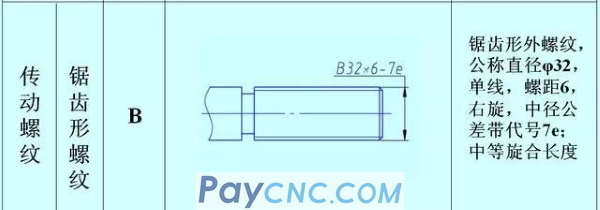 |
 |
| Products Catalogue | Home | About Us | Retrofit | Download | News | Tech Support | Contact Us | |
|
|
|
